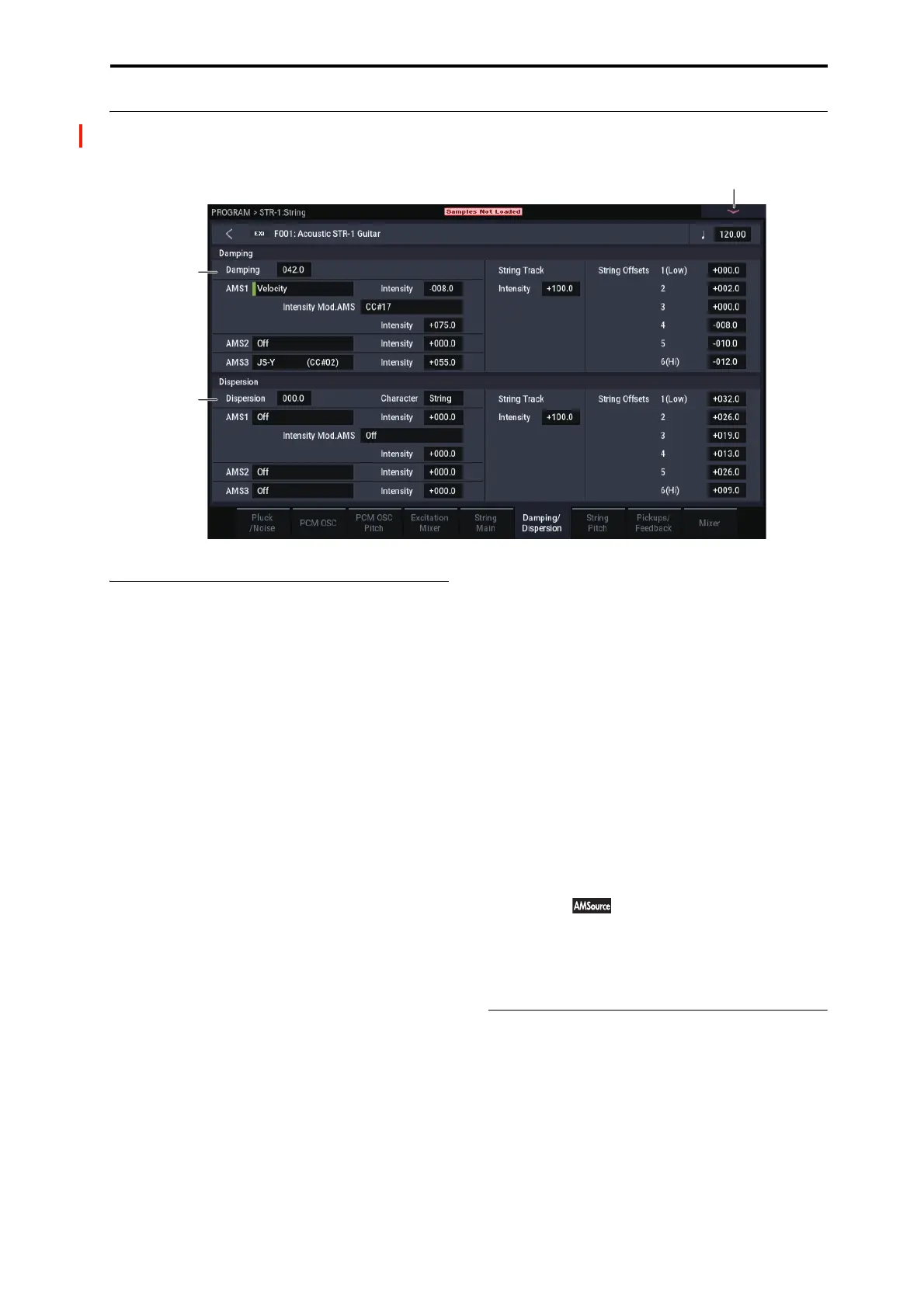PROGRAM > STR-1: String 4–6: Damping/Dispersion
225
4–6: Damping/Dispersion
4–6a: Damping
Damping [0…100.0]
This controls the decay time for the string’s high
frequencies. Higher settings mean a shorter high frequency
decay time, for a bright attack and a more mellow sustained
tone. Lower settings let the string ring brightly for a longer
period of time.
Damping interacts with the Decay parameter, which
controls the overall decay time. For more information, see
“4–5c: Decay” on page 224.
To create a comb-filtered effect with PCM or audio input,
instead of a string model, set Damping to a moderate value.
AMS 1 [List of AMS Sources]
This selects the first modulation source to control the
Damping. For a list of AMS sources, see “Alternate
Modulation Source (AMS) List” on page 901.
Intensity [-100.0…+100.0]
This controls the depth and direction of the Damping AMS
modulation.
Intensity Mod AMS [List of AMS Sources]
This selects an AMS source to modulate the intensity of
AMS 1.
Intensity [-100.0…+100.0]
This controls the depth and direction of the Intensity Mod
AMS.
AMS 2 [List of AMS Sources]
This selects a second modulation source to control the
Damping. For a list of AMS sources, see “Alternate
Modulation Source (AMS) List” on page 901.
Intensity [-100.0…+100.0]
This controls the depth and direction of AMS 2.
AMS 3 [List of AMS Sources]
This selects a third modulation source to control the
Damping. For a list of AMS sources, see “Alternate
Modulation Source (AMS) List” on page 901.
Intensity [-100.0…+100.0]
This controls the depth and direction of AMS 3.
String Track
String Track Intensity [-100.0…+100.0]
This controls the overall depth and direction of String
Tracking’s effect on the Damping. You can adjust the
offsets for each string using the Strings 1…6 parameters, as
described below.
String 1…6 [-100.0…+100.0]
These set the individual Damping offsets for the six Strings,
as set under “9–9b: Strings” on page 250. These values are
also available for modulating other parameters via AMS;
they appear in the AMS list as Damping String Track.
4–6b: Dispersion
Dispersion [0…100.0]
This models the rigidity of the string. Higher values
correspond to thicker-gauge strings, and increase the
inharmonicity of the string. (“Inharmonicity” means that the
pitches of the overtones become out of tune with the
fundamental.) At extreme values, it will create bell-like
timbres, as if you were hitting a bar of metal.
Dispersion can be modulated by three AMS sources, which
are added to the Dispersion setting.

